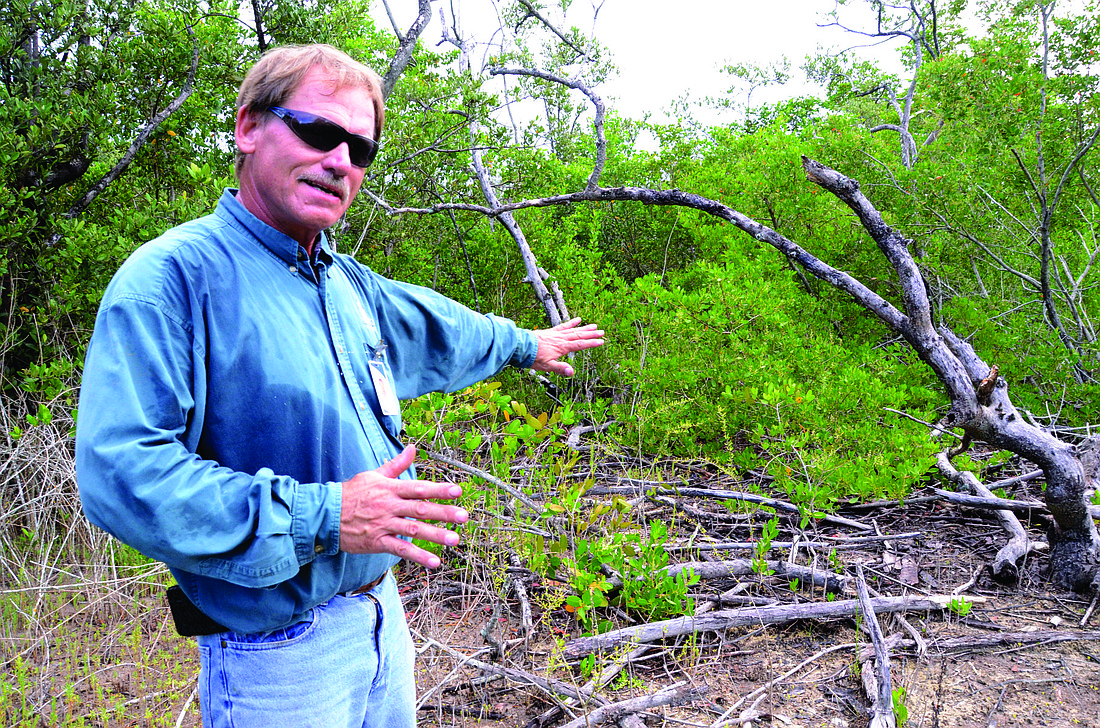- November 28, 2024
-
-
Loading

Loading

Located on Midnight Pass near the northernmost tip of Casey Key, Palmer Point Park once offered the epitome of an Old Florida landscape as a tidal flat filled with mangrove forests. However, dredging that took place in the 1960s changed all that.
Now, Sarasota County is preparing its latest effort to change it back.
Palmer Point Park has undergone several restorative efforts over the last 20 years, said George Tatge, manager of beaches and water access parks for Sarasota County. But a 1.75-acre space at the south of the park is the last part left to be restored.
Although construction won’t begin on the park until next year, the county is updating the project design and starting its search for a contractor.
The park is accessible only by foot from Turtle Beach or by kayak. Its “pack in, pack out” policy — meaning no facilities or no trash cans — have kept its few visitors accountable and the area clean.
But the land was changed in the 1960s when the Army Corps of Engineers dredged the intercoastal waterways to provide a waterway for nautical commerce, said Curtis Smith, project manager for the restoration. Some of the dredged sand was dumped on this section of what is now Palmer Point Park, and increased the elevation of the area. The ecological system was changed: Invasive species over-ran the area, ruining the native mix of biodiversity.
The county began work to restore this section of the park in 2008, when it spent $117,000 to hire a contractor to remove invasive vegetation and sand that was dumped on the site during the dredge.
The mound of dredge had to be removed, the sand put on a barge, and the barge moved to a spot at which dump trucks would load the sand and haul it away. However, the project stalled in 2011 when residents of a Vamo neighborhood where the sand was to be transferred from the barge objected to the truck traffic, Smith said.
Another location was found, but would have cost more to use because it was farther away. The county and the contracted constructors could not agree on a new price, and the entire project was terminated, Smith said.
Now, it’s getting back on track.
“The project has a long history,” Smith said, but he adds that the county is committed to seeing it to completion.

There has been some setback — about 40% of the invasive species eliminated the first time around have grown back, Smith said. In only three years, new pines grew 15 to 20 feet.
“I see it as a testament to how tenacious some of these invasives can be,” Smith said.
Restoring the area to its natural habitat is important because it helps the ecosystem be more productive. The natural mangrove swamp feeds the small fish and animals that live in shallow water and provides roosting for birds. The protection from the roots also allows oysters and barnacles to grow.
“This is one of the most valuable places on the planet… (in) the microbiology world,” Tatge said. “If you pick up a handful of ‘muck’ that’s in the mangrove swamp and count the number of critters, there’s millions of them.”
Returning this last piece of Palmer Point Park to its natural state will also have the added benefit of removing a prime mosquito breeding habitat, Smith said.
After the removal of invasive species and lowering the elevation by taking out the fill, the county will plant about 5,000 mangrove seedlings to restore the habitat. When construction is complete, the area will be placed under conservational protection.
“One thing nice about (the park) is, it’s not easy to get to… it doesn’t get a lot of traffic,” Smith said. “It’s a big stretch of natural beach.”